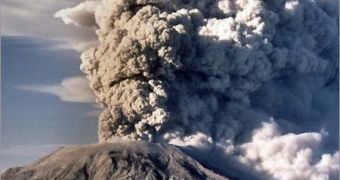Northwestern US is not given to rest: Mount St. Helens seems to enter the same cycle followed by Kilauea in Hawaii with magma being replaced from an reservoir located under the volcano at the same pace as it goes out as lava at the surface.
"While the two volcanoes are different in many respects, St. Helens appears to have become an "open system'' as its domebuilding eruption that began in the fall of 2004 continues at a pace that has been unchanged for the past year," said Daniel Dzurisin, a geologist at the U.S. Geological Survey's Cascades Volcano Observatory.
Digital elevation models based on high-resolution aerial photographs allowed the researchers to assess the rate at which lava has been pushing into the crater. At the initial moments, it was roughly a dumptruck load, about 8 cubic yards per second.
In 2005 the rhythm slowed down to a little more than 1 cubic yard per second and since last April it has been constant at about 0.6 of a cubic yard per second, which still means roughly nine truckloads every two minutes. "The longer the eruption continues at that rate, the more likely it is that a direct pathway has developed for molten rock to emerge from deep within the planet's crust," said Dzurisin. "It will take another year of data to reach a more definite conclusion. That situation could go on for a long time. The ongoing eruption (at Kilauea) in Hawaii, for example, started in 1983',' Dzurisin said.
Another clue pointing to the development of an open system at St. Helens is the decrease of deformation around the slopes of the volcano, revealing the magma chamber under the surface is being refilled rather than emptying.
At Johnston Ridge Observatory, located at five miles (8 km) north of the crater, a global positioning system (GPS) monitor has displaced toward the volcano by about an inch (2.5 cm) since the beginning of the eruption, most of the move occurring in the first year and a half. Since then, the deformation rhythm has slowed down considerably while lava continues to be expelled, pointing to the fact that the magma is being replenished.
The symmetrical, cone-shaped peak displayed by St. Helens, comparable to the Japanese Mount Fujiyama, was built in about four centuries before blowing out on May 18, 1980, losing its 1,314 feet (400 m) top, flattened miles of southwest Washington forests and killed 57 people. "We know that St. Helens is capable of dome eruptions lasting decades,'' Dzurisin said.

 14 DAY TRIAL //
14 DAY TRIAL //